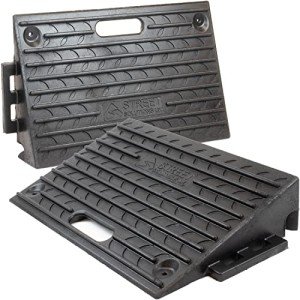
Foldable Ramps For Wheelchairs
Add a review FollowOverview
-
Founded Date June 10, 1978
-
Sectors Digital & Creative
-
Posted Jobs 0
-
Viewed 5
Company Description
The Greatest Sources Of Inspiration Of Ramps For Wheelchairs
The Ultimate Guide to Removable Ramps for Wheelchairs
As society moves towards inclusivity, the need for available home has ended up being more pronounced. For people who rely on wheelchairs, removable ramps function as vital tools to navigate numerous environments. This comprehensive guide explores the significance of removable ramps, their advantages, types, and frequently asked questions, all presented with clarity to guarantee that anybody, regardless of their familiarity with the subject, can comprehend their value.
Comprehending Removable Ramps
Removable ramps are portable, lightweight structures created to help wheelchair users in overcoming obstacles such as stairs, curbs, and doorways. Unlike long-term ramps, these can be taken down and carried easily, making them ideal for temporary usage in homes, public places, or events.

Key Features of Removable Wheelchair Ramps
| Feature | Description |
|---|---|
| Product | Typically made of aluminum, plastic, or wood, guaranteeing resilience while being lightweight. |
| Mobility | Easy to move and keep, making them perfect for various uses and areas. |
| Adjustability | Some models can be changed in height or length to accommodate different barriers. |
| Weight Capacity | Most ramps can support weights varying from 300 to 800 pounds, accommodating a vast array of wheelchairs and users. |
Benefits of Using Removable Ramps
The advantages of removable Movable Wheelchair Ramps ramps extend far beyond mere accessibility. Here are a number of essential benefits:
-
Flexibility: Removable ramps can be utilized in several places, whether it be at home, work, or throughout getaways.
-
Cost-efficient: Investing in removable ramps can be less expensive than building long-term ramps, specifically for tenants who can not customize their homes.
-
Security: They offer a safe service for wheelchair users to navigate irregular surface areas, lowering the danger of mishaps or falls.
-
Variety of Options: Available in various sizes, weights, and materials, permitting users to find the perfect suitable for their needs.
-
Storage: When not in usage, removable ramps can be easily saved, maximizing area.
Kinds Of Removable Ramps
Here’s a breakdown of the most typical kinds of removable ramps available:
| Type | Description | Perfect Use Case |
|---|---|---|
| Folding Ramps | Compact, versatile ramps that can be folded for storage. | Ideal for lorries, home use, and travel. |
| Telescoping Ramps | Adjustable ramps that can be extended or reduced. | Appropriate for differing heights and limits. |
| Strong Ramps | Non-folding, sturdy ramps that supply a continuous surface. | Best for irreversible setups in temporary environments. |
| Threshold Ramps | Short, often lightweight ramps developed for doorways. | Perfect for browsing curbs or doorsteps. |
Selecting the Right Removable Ramp
When selecting a removable ramp, several aspects ought to be taken into consideration, including:
-
Weight Capacity: Ensure the ramp can support both the user and their wheelchair.
-
Length and Width: Measure the height of the action or limit and select a ramp that offers an appropriate slope.
-
Material: Decide between alternatives like aluminum for mobility or a more solid material for stability.
-
Mobility: Evaluate how far you will need to transport the ramp and pick one that fits your needs.
-
Storage: Consider the space offered for keeping the ramp when not in use.
Extra Considerations
Safety Features
When investing in removable ramps, safety needs to be a top priority. Features to consider consist of:
-
Non-Slip Surface: Ensures traction for wheelchair wheels throughout usage, especially in damp conditions.
-
Side Guards: Prevents the wheelchair from rolling off the edge.
-
Resilience: Look for products developed to endure outdoor conditions if required.
Installation
Although removable ramps are designed for ease of use, some may need very little assembly. Always review the maker’s standards before usage.
Regularly Asked Questions (FAQs)
1. Are removable ramps costly?
Costs can vary substantially depending on the size, product, and brand. Removable ramps may vary from ₤ 100 to ₤ 700, making them an affordable choice compared to custom-built, irreversible ramps.
2. How do I keep removable ramps?
Keep ramps clean and devoid of debris. Frequently look for indications of wear or damage, specifically if used outdoors, considering that climate condition can impact stability.
3. Can someone established a removable ramp?
Yes, many removable ramps are lightweight and developed for simple setup by a single individual. Nevertheless, it is suggested to have help when raising heavier models.
4. Will a removable ramp work for my wheelchair?
A lot of removable ramps are suitable with standard wheelchairs and scooters. Always verify the weight capability and measurements to make sure compatibility.
5. Exist policies relating to ramps in public areas?
Yes, the Americans with Disabilities Act (ADA) describes specific guidelines for ease of access, including ramp specifications. If you plan to utilize ramps in public locations, guarantee they abide by local regulations.
Removable ramps for wheelchairs are not simply practical tools; they symbolize a society pursuing ease of access and inclusivity. From enhancing mobility to providing safety and benefit, the value of these ramps can not be overstated. As the market continues to evolve, users will discover much more innovative services customized to their needs, making sure that everyone can navigate their world with confidence and ease.
When picking a removable ramp, keep in mind to examine private requirements and seek advice from guidelines to take full advantage of safety and performance. The ideal ramp can open doors– literally and figuratively– enabling users to experience flexibility and self-reliance in their lives.
